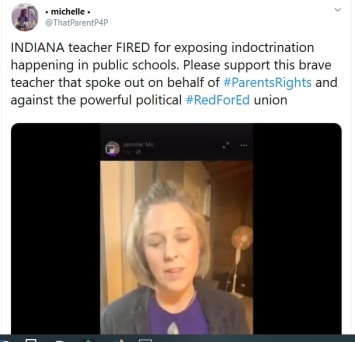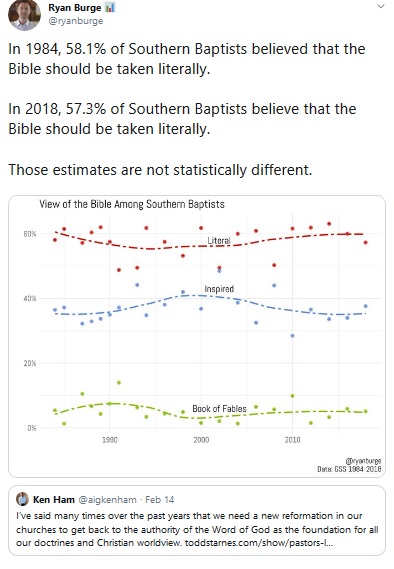Time for conservatives to freak out? No, not really, but you wouldn’t know it if you only read the Chicken Little-ism of Gilbert T. Sewall in the American Conservative. As have conservatives for a full century now, Sewall makes a fundamental mistake when it comes to American education.
Why is Sewall freaking out? It seems California has introduced a new curricular requirement to its public schools. Soon, to graduate from high schools Californians will have to complete an Ethnic Studies class. What will it mean? According to Sewall, it will be nothing less than
a revolutionary storm sweeping through educational leadership in the nation’s legislatures and metro school districts.
Except…it won’t. Of course it won’t. For good or ill, no single curricular requirement can have that much impact on the goings-on in America’s classroom.
What is Sewall worried about? As he describes,
Ethnic Studies is the “disciplinary, loving, and critical praxis of holistic humanity.” It is the study of “intersectional and ancestral roots, coloniality, hegemony and a dignified world where many worlds fit.” It “critically grapples with the various power structures and forms of oppression, including, but not limited to, white supremacy, race and racism, sexism, classism, homophobia, islamophobia, transphobia, and xenophobia.” . . .
“The foundational values of Ethnic Studies are housed in the conceptual model of the ‘double helix,’” the text professes, “which interweaves holistic humanization and critical consciousness.” The proposed course of study, while promising to help with the “eradication of bigotry, hate, and racism” and the promotion of “socio-emotional development and wellness,” seems intended mainly to stir ill will and delegitimize the nation’s white majority. The conviction that malign U.S. wealth and power exist at the expense of certified underdogs undergirds the entire document.
So, should conservatives panic? For that matter, should progressives celebrate? No and no. Why not? A little background: As I argued in my history of American educational conservatism, conservatives have long assumed that progressive school rhetoric reflected a revolutionary new reality in America’s classrooms. It doesn’t and it never has.

How to panic, c. 1949.
Consider, for example, the alarmist language of 1940s pundit Allen Zoll. Zoll was a hard-right hack who managed to build a mailing list of many respectable thinkers and activists. In his pamphlets, he snipped a few bits of progressive-ed language and baked them into an apocalyptic meringue for his readers. Consider this snippet from Progressive Education Increases Delinquency:
The tragic and terrifying thing about all this [progressive education] is that it represents not merely rebellion against a moral code, but denial that there can be any binding moral code. It is a fundamental revolution in human thinking of the first order: it is mental and ethical nihilism. If it goes on unchecked, it will mean not merely tragedy for millions of individuals, it will mean the disintegration and final extinction of the American society.
We don’t even need to argue that progressive classroom methods will do no such thing. All we have to do this morning is point out that such progressive methods never had anything near the influence Zoll assumed they did. Like many of his conservative allies, Allen Zoll read a few progressive pamphlets then told his many readers that those ideas reflected a terrifying new revolutionary reality in America’s classrooms.
They didn’t then and they don’t now. Think about it: If changing a curriculum could have sweeping revolutionary changes in the ways people think, we would have long ago have abolished both racism and radical young-earth creationism.
Exhibit A: When it comes to creationism, as political scientists Michael Berkman and Erik Plutzer noted, state standards for teaching evolutionary theory are generally pretty good. But that doesn’t mean that people are really learning evolutionary theory in schools. Obvs.
Exhibit B: As for racism, historian Zoe Burkholder argued that anti-racist academic activists such as Franz Boas and Margaret Mead had some real success introducing anti-racist materials in the New York City curriculum, way back in the 1940s. Did that mean that racism was eliminated? Sadly, no.
The point here is not that anti-racist or pro-evolution curriculum is a bad idea. Personally, I agree that every student should be exposed to such ideas. But just adding an idea to a mandated curriculum does not now and has not ever resulted in sweeping changes in the things people actually learn in school.
For me and my progressive friends, that can come as a sad and sobering wake-up call. For some conservatives, like Gilbert Sewall, it should come as a heavy dose of reassurance.
Because unlike what Sewall predicts, this change in California curriculum does not herald the destruction of traditional values or hierarchies. California, regardless of what Sewall says, has not really “abandon[ed] teaching and learning in favor of political indoctrination.”
For what it’s worth, I sympathize with Sewall. No one would read his article if he said, “I don’t like this change but it’s not really that big of a deal.” As have conservative pundits for a century now, Sewall chose to inflate the real danger in order to attract anxious readers.
However, this kind of educational alarmism is a problem. It leads readers to conclude that something profound has gone horribly wrong with America’s schools. Even when they see counter-evidence with their own eyes, Americans tend to listen to the unfounded panic-mongering of writers like Sewall instead of calmer, boringer voices.

People LIKE the schools they know.
What should we do instead? It’s not easy, but it is obvious. Instead of browsing through state mandates, we should get to know real schools. We should visit local schools, attend school-board meetings, and talk with teachers and neighbors about what happens on a day-to-day basis. If more people did that, there would less panic and more pragmatism in every discussion of public education.

 I don’t think so. Historically, the fight in school politics has always been for the middle. Whoever can prove she is fighting for better schools will win. Alice Moore won in West Virginia in 1975 by fighting for better textbooks for students. She won by convincing enough neighbors that she represented better schools, the “best academic education possible.”
I don’t think so. Historically, the fight in school politics has always been for the middle. Whoever can prove she is fighting for better schools will win. Alice Moore won in West Virginia in 1975 by fighting for better textbooks for students. She won by convincing enough neighbors that she represented better schools, the “best academic education possible.”

 Exhibit A: As William J. Reese demonstrated in his
Exhibit A: As William J. Reese demonstrated in his 












